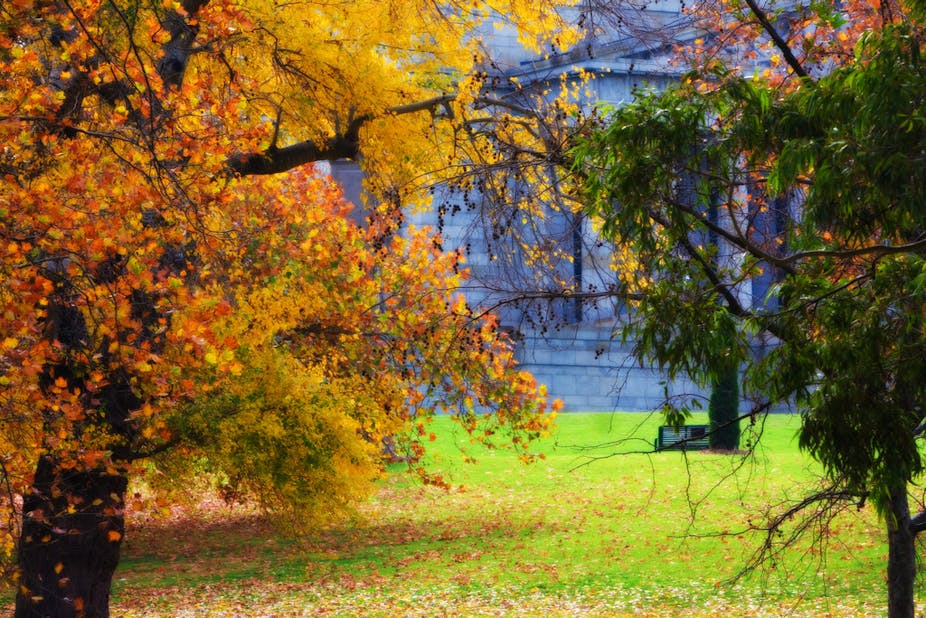If you’ve been for a leisurely stroll in your local park recently, you’ve probably noticed that autumn is in full swing.
All manner of brightly coloured leaves cover the ground and this fact alone is cause for reflection: it’s been many years since we’ve had such a vibrant autumn.
The reason lies in weather patterns of the past year or so: we have had excellent autumn and summer rainfall which allowed luxuriant foliage growth for the first time in approximately 14 years.
The long dry spell saw a thinning of tree canopies and premature and sporadic leaf shedding. Trees such as our elms and planes have been subdued by the dry, warm weather, shedding leaves over summer as drought stress took its toll.
When autumn came there were few leaves to shed and the leaves that were shed were duller, lacking that vibrant colour so synonymous with an Australian autumn.
As a result, autumn almost passed by unnoticed as we barrelled toward winter.
This year’s prolific growth has seen trees retain a full canopy of bright green foliage over summer and into early autumn. Colder days over the past few weeks have triggered a full and rapid withdrawal of chlorophyll from leaves, revealing yellows and browns in a matter of days.
And it’s not just the colour of this year’s autumn falls that you might have noticed. There’s been the rustling of fallen leaves in the cool breeze, and the accompanying joy of scuffing your way through the drifts of autumn leaves.
The mild spring and summer that allowed trees to retain their leaves also resulted in trees accumulating large amounts of sugar from an extended period of photosynthetic activity.
So much sugar was produced that some was converted to pigments such as anthocyanins which are stored in leaf cells. These pigments are responsible for the range of colours you see in autumn leaves: from pale yellow, through the various oranges, to the most wonderful deep crimsons and reds.
When the temperatures drop, the removal of chlorophyll is once again triggered, but instead of the pale yellow and browns emerging in species such as liquidambar, maples and claret ash, the hues are orange and red. This adds enormously to the rich palette of autumn colours that are on display.
In some places the deep green and blue foliage of conifer such as pines, cypress, cedars and spruce (which have also shown excellent growth in the past six months) are added to the kaleidoscope of native evergreens and deciduous colour.
Surely this is nature’s artistry at its very best.
Unfortunately though, the warm and dry conditions of the past decade may have given us a glimpse of what autumn will look like as global climate change continues to take hold.
We waited for more than a decade for this vibrant autumn, and we might have long periods of waiting in a warmer future. However, there will still be mild, wet summers and cold autumnal days from time to time.
When this occurs autumn colour will be back in all its glory, and, as with this year, we will all take notice.

